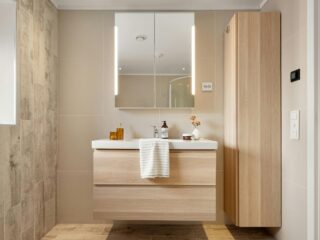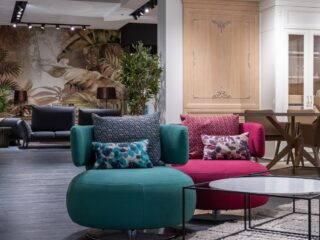
An excellent interior design is a combination of many elements. Cabinetry is mostly ignored but shapes the overall look of your rooms. From the kitchens to bathrooms, they double up as essential storage solutions and interior design features.
Among the many ways that cabinets affect interior design is through visual impact. The style, color, and placement of your cabinet bookshelf either complements or distracts your overall design scheme. For instance, sleek cabinets with clean lines can enhance the appearance of contemporary kitchens. Conversely, rustic wood cabinets add warmth and character to farmhouse-styled interiors.
That said, below are a few ways to ensure cabinetry aligns with your interior design.
Consider Design Harmony
Design harmony essentially means ensuring that various elements are placed cohesively to create a unified and appealing environment. Design harmony for cabinets requires careful consideration of the style, color, and placement. For starters, you should choose a cabinet that aligns with the design theme of your space.
For instance, opt for cabinets with sleek lines and slab style if you want a modern kitchen appeal. On the other hand, shaker-style cabinets are appropriate for rustic settings.
Color plays an important role in ensuring design harmony. Color choice can either unify the room or create unsightly discord. Therefore, you should choose a color that complements or matches the color palettes of your rooms.
You should also choose materials carefully. Be it wood or glass, your material of choice should complement the aesthetics of the room. For instance, wooden cabinets add character to rustic interiors, while glass options evoke a sense of modernity.
Optimize Functionality
You should also optimize cabinet functionality. The benefits of having cabinets go beyond providing adequate storage spaces. They should be designed and positioned to enhance its usability and efficiency while complementing interior design. Therefore, instead of installing large cabinets that are an eyesore, find ways of optimizing functionality without negating your interior design theme.
One of the many ways of achieving this is through thoughtful cabinet design. Opt for cabinets with pull-out drawers and adjustable shelves. You should also think about accessibility. Position your cabinets at ergonomic heights for easy reach. For instance, bathroom cabinets should be installed to provide ample counter space for grooming tasks.
The layout and arrangement of cabinets in the room are also important. Cabinets should be positioned strategically to optimize traffic flow. For instance, ensure that you observe the work triangle in the kitchen.
Maximize Natural Light
Natural light is an important aspect of interior design. Unfortunately, cabinet placement can impede natural lighting in your home. You should always consider how cabinets can facilitate or obstruct natural light before incorporating them into your design scheme.
Fortunately, you can maximize natural light by using cabinetry in many ways. First is by choosing light-colored finishes. Light-colored cabinets reflect more light than dark-colored options. They help brighten your space. You should also find ways of using glass inserts or open shelving, as they allow light to pass through the cabinets.
Mirrored cabinet doors are also a thing. They are an excellent choice as they amplify natural light in the room. Remember to keep your window treatments minimal.
Endnote
Though often ignored, cabinets can shape the overall appearance of your interior design. Thoughtfully designed cabinets can enhance the functionality and aesthetic appeal of your rooms. They also serve as important focal points while providing storage solutions.







